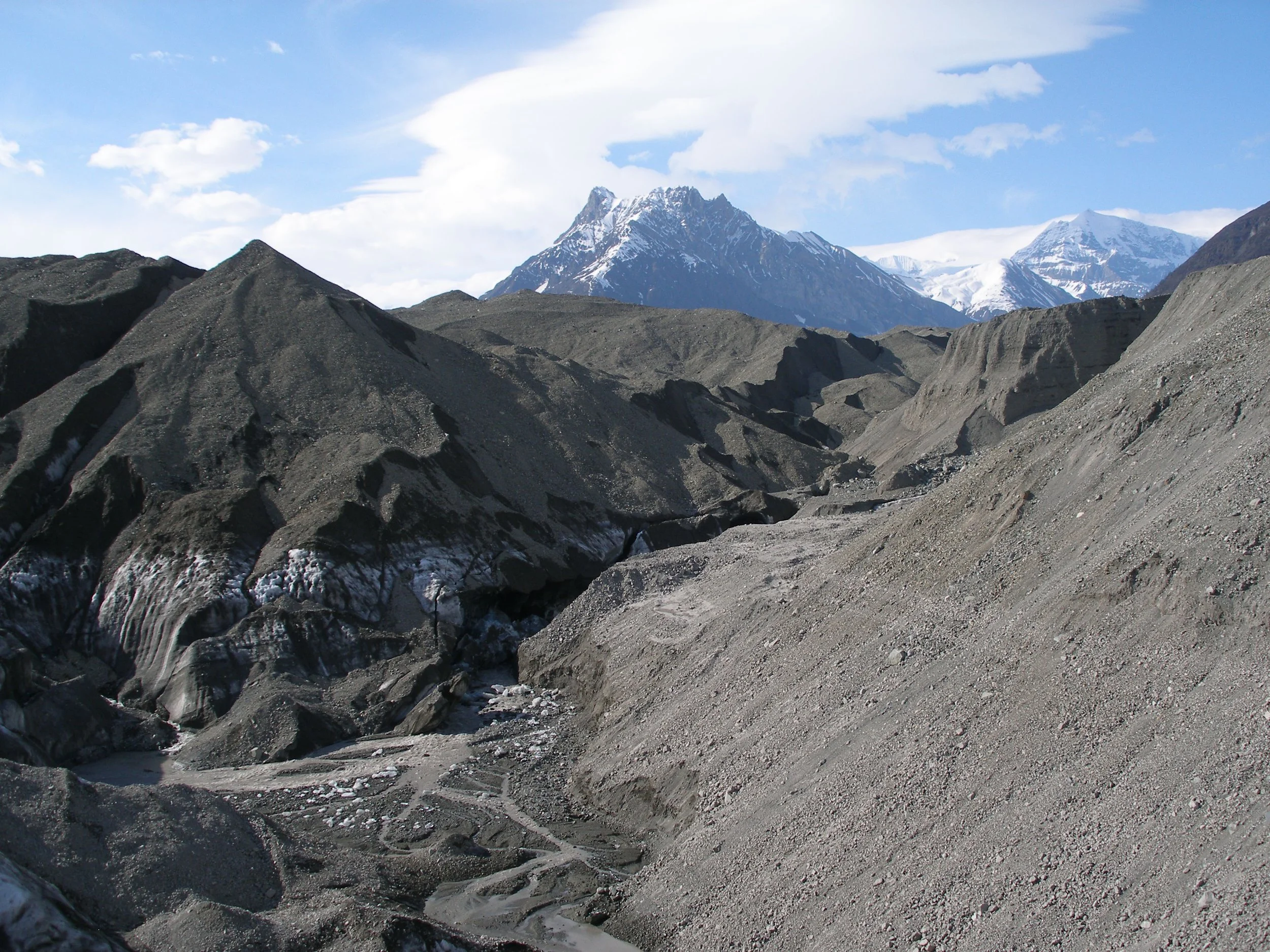
Location
The program bases at the Wrangell Mountains Center at the tiny town of McCarthy in Wrangell-St. Elias National Park & Preserve, walking distance from the Kennicott Glacier, boreal forest and ponds, rock glaciers and alpine meadows. When in town, students live using Wrangell Mountains Center facilities, sleeping in their tents nearby. The Center has hosted college field studies over four decades. The 2024 program continues this tradition.
From McCarthy, the program backpacks up the ice and into the surrounding alpine terrain. The location is ideal for studying biophysical change on and along glaciers during global warming. We focus on the flow of material and energy through a landscape in disequilibrium, including sediment-covered glaciers, nearby rock glaciers, and fluvial transport by McCarthy Creek, affected by permafrost melt. The Kennicott Valley reveals 230 million years of evolution and transformation at multiple time and space scales.
Here, students learn to observe deglaciation and ecological succession since the 1860 Little Ice Age maximum. They see how older moraines indicate extent of previous glacial highstands. Landslides, cliff faces and visibly massive sediment transport by rivers and ice demonstrate tectonic uplift, denudation and ecological adjustment to unstable conditions. Exposed metamorphosed basalt, limestone, and shale sequences reveal processes forming western North America, including island arc and oceanic plateau formation and migration. Effects of the ongoing Yakutat microplate collision with North America show in the volcanic high peaks at the head of the valley and in igneous facies, dikes, and sills; and in the ~2000 meter uplift of the terrain around McCarthy, exhumed largely by Pleistocene glaciations to form the present pattern of peaks, plateaus, and U-shaped valleys. Ecosystems show adaptation to this instability and to seasonal extremes, dependent on summer productivity and on energy and protein imported from elsewhere by migration, including salmon that feed local fauna and fertilize the forest, and whose species co-evolved with the uplift of North Pacific mountains.



















